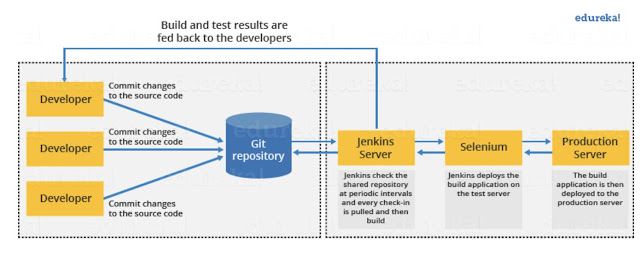Jenkins is an open source automation tool that is written in JAVA programming language which allows continuous integration. Jenkins build our code and tests it continuously
--> Generally developers will do some changes in source code and commit them. So Jenkins builds and tests on our software projects continuously. So Jenkins trigger a build and run any tests if required. If there are any errors, then it will show you them in early stages.
--> Jenkins allow us to deliver our software continuously by integrating with large number of testing activities.
--> Jenkins supports CI(Continuous Integration) with the help of plugins because plugins are allowed to integrate in various DevOps stages
History:
Kohsuke Kawaguchi is a JAVA developer working in SUN microsystems. He is tired of building the code and fixing the errors repetetively. So he has created an automation server in 2004 called HUDSON
In 2011, there is a dispute with Oracle owner. So they forked hands on and renamed it as JENKINNS
So both are contributed independently. But in a short period, Jenkins become more popular and acquired lot of contributors and projects.
Continuous integration with Jenkins:
👉 First a developer will commit required changes in source code repository.
👉 After particular changes are done, Jenkins will finds the changes that are made in source code. Jenkins will start preparing a new build with respective to those changes.
👉 If that build is failed, it will noticed to respective developer
👉 If that build is successful, then it will deploy those changes to test server.
👉 After testing, Jenkins will generated some feedback and gives these results to developer
👉 After analysis done by the team, Jenkins server will deploy these changes in production server.


Comments
Post a Comment